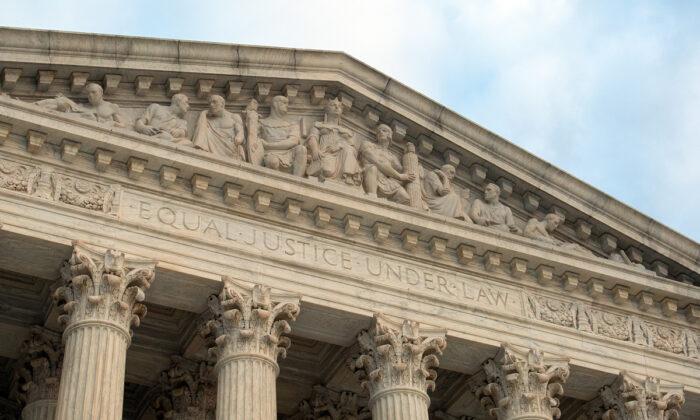On Jan. 22, the Supreme Court will hear a religious freedom case. The outcome will determine whether states may manage their educational systems to discriminate against religion or favor some religions over others.
The U.S. Supreme Court interprets the Constitution’s First Amendment to impose several rules governing how states treat religion. Two rules are central to the Espinoza case.
Rule No. 2 is much stricter: The government must treat all religions equally. A state may not prohibit aid to students studying for the Jewish rabbinate if it grants aid to students studying for the Christian ministry. The courts almost never allow government officials to play favorites among religions.
In light of these rules, it’s surprising to learn that most state constitutions have provisions designed to favor some religions over others. They are anti-sectarian clauses, and they require or permit the state to support “non-sectarian” schools, but prohibit support for “sectarian” schools.
But what does “sectarian” mean? Today, many people use the word as a synonym for “religious.” If we adopt that meaning, then state constitutions with anti-sectarian clauses potentially violate Rule No. 1 by supporting secular schools but not religious ones. In defense, states argue this discrimination is permissible to avoid state “entanglement” with religion.
The Espinoza case serves as an example. The Montana legislature passed a law allowing taxpayers to take income tax credits of up to $150 if they donated to foundations granting K-12 scholarships. The Montana Supreme Court voided the law, claiming it breached the state constitution’s anti-sectarian clause because the law permitted scholarships for students in religious as well as in secular schools. For justification, the court cited the need to support government schools and avoid state entanglement with religion.
One wonders how protecting a state school monopoly can justify violating religious freedom. Also, the U.S. Supreme Court has held that a single buffer between the state and a religious school—student choice—is sufficient to avoid “entanglement.” The Montana law actually created a triple buffer: the choice of the donor, the choice of the scholarship foundation, and the choice of the student or his or her family.
So in all probability, if we interpret the word “sectarian” to mean “religious,” then Montana has discriminated against religion generally, thereby violating Rule No. 1.
Here is the background: During the 19th and early 20th centuries, public schools usually were controlled by mainline Protestants, and school authorities promoted mainline Protestant theology. For example, teachers and textbooks often taught from the King James Version of the Bible—a version accepted by most Protestants, but rejected by Catholics and Jews.
The Protestant public school establishment wanted to protect its privileged access to state funds. So it convinced state constitution-writers to ban public aid to “sectarian” competitors.
“Sectarian” was a very convenient word for the Protestant public school establishment. Nineteenth- and early 20th-century dictionaries, newspapers, and other sources show that it encompassed all religions except mainline Protestantism. In the rhetoric of the time, Catholics were “sectarian.” So were Jews, Mormons, Muslims—and even those Protestant evangelicals the mainliners thought over-enthusiastic. The one group never called sectarian were mainline Protestants.
Anti-sectarian clauses were designed to permit public money to flow to Episcopal, Methodist, and Presbyterian schools while denying it to Jewish, Mormon, Muslim, and Catholic schools.
Constitutional commentators often call anti-sectarian clauses “Blaine Amendments,” after the 19th-century statesman James G. Blaine. Supposedly they originated with a proposed amendment to the U.S. Constitution that Blaine sponsored in 1875 while a member of Congress. Allegedly Blaine did so in the cause of anti-Catholic bigotry.
But that story is both inaccurate and unfair to Blaine. Anti-sectarian clauses were inserted in some state constitutions well before Blaine’s 1875 proposal. Moreover, Blaine’s amendment, while of questionable wisdom, didn’t use the word “sectarian” and didn’t overtly discriminate among religions. Nor was Blaine anti-Catholic: He was devoted to his Catholic mother, he may well have been baptized in that faith, and throughout his political career, he stoutly resisted the anti-Catholic rhetoric then favored by other Republican politicians. As U.S. secretary of state, Blaine opened our historic Pan-American outreach to (Catholic) Latin America.
Anti-sectarian clauses were—and are—far worse than anything Blaine promoted. A state convention inserted one such clause into Montana’s first constitution at the height of the anti-Catholic furor. (By contrast, the word “nonsectarian” was used favorably on the convention floor.)
Third, the disgraceful history of anti-sectarian clauses is so evident that it’s hard to ignore.
Finally, almost everyone recognizes that monopoly isn’t a good thing, particularly when it’s propped up by the state. The problems afflicting public schools—high cost, impaired effectiveness, and political interference—are classic symptoms of government monopolies. Surely U.S. Supreme Court justices recognize that as well.





